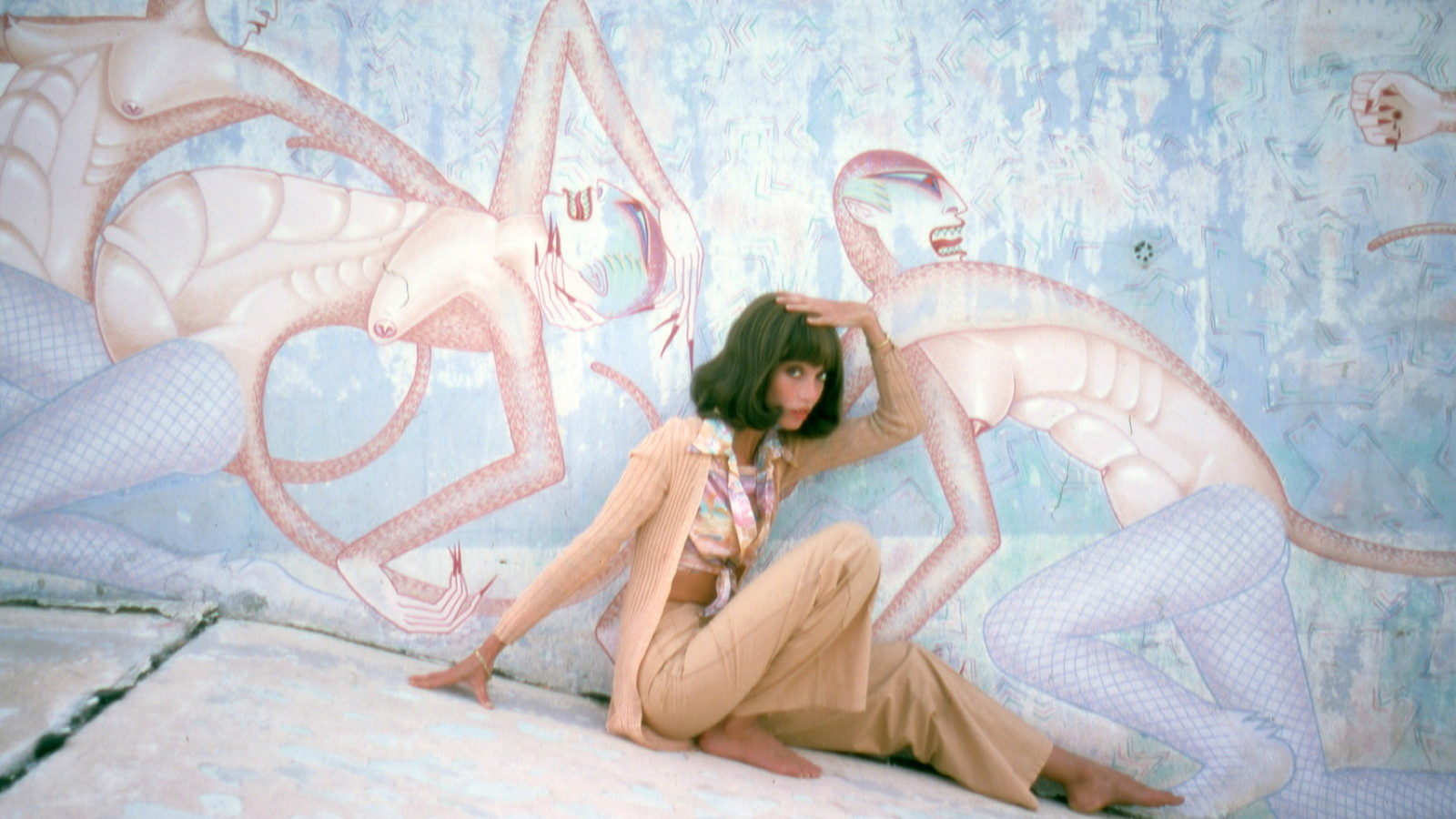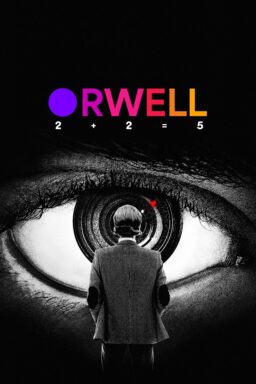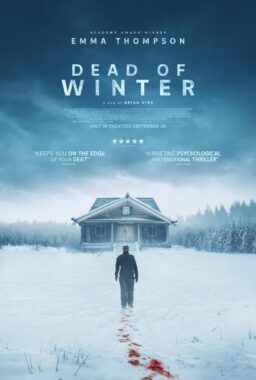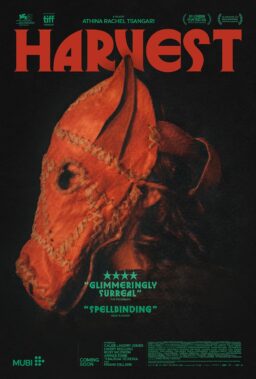When film historians sit down to tackle the cinematic legacy of the year 1977, the resulting analysis tends to revolve, in one way or another, around the release of a little thing called “Star Wars” and how it revolutionized the industry and exerted an influence on subsequent generations of filmmakers around the world that continues to this day. Obviously, it is hard to understate just how much that film changed cinema—both for good and ill—in ways few others have done before or sense. That said, “Star Wars” was hardly the only thing going on in the world of film that year. In fact, 1977 proved to be one of those rare years when things were hopping on any number of levels—there were fascinating efforts from renowned veteran filmmakers from around the world, audacious debuts from a new crop of talent that would soon grow to prominence themselves and fascinating examples of every imaginable genre. Hell, even the usual array of sequels, knockoffs and programmers offered up by the Hollywood studios tended to be more interesting than usual. Even if one were to remove “Star Wars” from the equation entirely, 1977 would still go down as one of the more significant years in the history of film based on the strength of these sometimes unsung titles.
To demonstrate this, the Film Society of Lincoln Center in New York has put together “’77,” an ambitious retrospective that offers a eye-opening look at the surprisingly diverse array of films that was available to moviegoers during what would prove to be one of the great years for cinema. Running August 4-24, the series will feature screenings of 33 films from around the world, many of them in 35mm, that include everything from wild comedies to searing drama to bizarre horror spectacles to a few films that simply defy categorization. Some of the movies being presented went on to become enormous hits while others are still waiting to be rediscovered. What they all have in common, other than the same year of release, is that in nearly ever case, the films serve as a fascinating representation of what was going on in the world at the time, cinematically and otherwise, and continue to hold up surprisingly well today
The centerpiece of the retrospective is a week-long presentation of that year’s offering from one of the most significant filmmakers to emerge during the Seventies, Robert Altman’s still-stunning “3 Women.” Inspired by a dream that Altman supposedly had one night and sold to 20th Century Fox without a completed script, it tells the story of two women working at a run-down spa in the California desert—Millie (Shelley Duvall), who tries to present herself as some kind of glamorous and worldly sophisticate but who cannot even manage to keep from constantly shutting her car door on the skirt of her dress, and Pinky (Sissy Spacek), the shy and unassuming newcomer who buys Millie’s delusions of grandeur and quickly becomes obsessed with her to the point where it seems as if she is literally trying to become her. With a setup like that, this is a story that could have gone the way of either “Persona” or “Single White Female” but, not surprisingly, Altman instead goes for something that is utterly unique, defiantly obscure and absolutely mesmerizing to watch thanks to his direction, appropriately suffused with potent dream imagery and the efforts of his cast. Both Duvall (who won the Best Actress award at Cannes that year) and Spacek are mesmerizing; there are also stellar supporting turns from Janice Rule as a pregnant artist who owns the bar where Millie and Pinky hang out and Robert Fortier as her husband, as an over-the-hill cowboy whose involvement with the three women has startling repercussions for them all. Throughout his long and eclectic career, Altman would make a number of films deserving to be deemed a masterpiece and “3 Women” would prove to be one of his very best works.

Altman was hardly the only American auteur at work in 1977. Martin Scorsese followed up his controversial hit “Taxi Driver” with “New York, New York,” a lavishly staged and semi-improvised tribute to the MGM musical of the 1940s that charted the rocky relationship between a self-centered and self-destructive saxophonist (Robert De Niro) and a lounge singer destined for greatness (Liza Minnelli) as they try to come to terms with their personal and professional ambitions. Four years after his landmark horror hit “The Exorcist,” William Friedkin returned with “Sorcerer” but when audiences showed up for that one expecting more scares based on the title, they discovered that the film was actually an elaborately mounted remake of the French classic “The Wages of Fear” that followed four desperate men making a suicidal journey through the jungles of South America in two trucks filled with dangerously unstable nitroglycerin. Both movies were hugely expensive productions that failed to find audiences at the time, presumably because they didn’t cotton to their dark stories and largely unlikable characters (though the fact that “Star Wars” opened just before them might have had something to do with it) but their critical reputations have soared in subsequent years. The former may not be top-tier Scorsese but it contains a number of beautifully staged musical numbers (including the show-stopping “Happy Endings” number that was inexplicably cut from the film during its initial release and later restored) and De Niro’s brilliant turn as the resolutely obnoxious anti-hero is second only to his Rupert Pupkin in its ability to discomfit viewers. “Sorcerer,” on the other hand, is Friedkin’s masterpiece, a nerve-wracking journey into the heart of darkness undertaken by men with nothing to lose with a centerpiece sequence in which the men try to drive the trucks across an unstable rope bridge spanning a swollen river. It is one of the most terrifying and thrilling moments ever be captured on film.
Working on a somewhat smaller scale, maverick filmmaker John Cassavetes released “Opening Night,” a drama about an actress (Gena Rowlands) in rehearsals for a new play who is facing an emotional crisis brought on by her unwillingness to accept that she is getting older and from witnessing the accidental death of a fan who was killed trying to meet her. Although it usually gets overlooked by observers who prefer the likes of “A Woman Under the Influence” and “Love Steams,” this has actually proven to be one of Cassavetes’ better films, thanks mostly to Gene Rowlands turning in one of the very best performances of her career. On the opposite end of the dramatic scale, the equally iconoclastic Robert Aldrich presented “Twilight’s Last Gleaming,” a wild political thriller in which an imprisoned renegade general (Burt Lancaster) breaks out of jail, seizes control of a missile silo and threatens to launch the contents unless the President (Charles Durning) makes public shocking top secret documents regarding America’s participation in the Vietnam war. The film as a whole is not entirely successful but it is interesting to watch today on the basis that there is absolutely no way any major studio would ever dream of funding anything along these lines. As part of a mini-renaissance in feature animation that saw the release of such titles as “Allegro Non Troppo,” “Race for Your Life, Charlie Brown” and “The Rescuers,” indie animator Ralph Bakshi had “Wizards,” a weird, post-apocalyptic sci-fi/fantasy hybrid involving a conflict between two wizards representing the opposing worlds of magic and technology. (Although the film was largely ignored amidst the “Star Wars” hoopla, it did have one connection to that film in that one of the voices was supplied by the then-unknown Mark Hamill.)

1977 also saw the debut works of a number of filmmakers who would go on to significant careers. Ridley Scott emerged from the world of advertising with “The Duellists,” a visually stunning period drama about two officers in Napoleon’s army (played by Keith Carradine and Harvey Keitel) whose seemingly petty conflict expands to a decades-long affair in which the two repeatedly meet in a series of duels in the hopes of restoring their allegedly lost honor. Although oftentimes overlooked today, even by champions of Scott’s work, this is a smart drama so impeccably executed that one would be hard-pressed to prove that it was a first feature. Closer to home, Charles Burnett completed his first film, “Killer of Sheep” [pictured above], a largely plotless drama observing the lives of a working-class black family living in Watts. As he made it as his MFA thesis project, Burnett never intended for it to be commercially released but it did eventually get out and those lucky enough to see it dubbed it a masterpiece and it is now regarded as one of the key works of the early days of what would eventually become known as the American independent film movement. George Butler and Robert Fiore had a surprise hit in “Pumping Iron,” a documentary on the then-unfamiliar world of competitive bodybuilding that included future superstar Arnold Schwarzenegger as the most colorful and charismatic of the contenders for the title of Mr. Olympia. In perhaps the most significant of all the year’s debuts, David Lynch’s twisted labor of love “Eraserhead” emerged and became a sensation on the then-thriving midnight movie circuit with its combination of avant-garde stylings, dark comedy and moments that were pure nightmare fuel.
Beyond “Eraserhead,” the horror genre as a whole also thrived during the year as well. Having made quite an impression with their debut films, “Shivers” and “Last House on the Left,” David Cronenberg and Wes Craven returned with their respective follow-ups—“Rabid” (in which porn star Marilyn Chambers, in her first straight role, played an accident victim who receives an experimental treatment that leaves her with a taste for blood and her victims transformed into an ever-expanding army of rabid and bloodthirsty lunatics) and “The Hills Have Eyes” (where a family on vacation gets stuck in the desert and are attacked by a family of demented cannibals and are forced to resort to savagery in order to survive). If the two did not quite live up to the promise of their predecessors, they did confirm that their creators were anything but one-hit wonders.
Even the studio horror efforts were on the oddball side. “Demon Seed,” which marked Donald Cammell’s return to the director’s seat for the first time since the brain-frying cult favorite “Performance,” was a silly-sounding but squirm-inducing techno-terror tale. In it, Fritz Weaver builds a supercomputer, complete with artificial intelligence and the voice of Robert Vaughn, that becomes obsessed with human behavior to the point where it traps Weaver’s wife, played by Julie Christie, inside their completely automated home in the hopes of using her for reproductive purposes. Even that sounds staid when compared to the genuinely crazy “The Car,” a doozy of a film that attempts blend elements of Steven Spielberg’s “Duel” and “Jaws,” along with a soupçon of “The Exorcist” for good measure, in a tale featuring James Brolin as the sheriff of a sleep Utah town being attacked by, you guessed it, a Lincoln Continental that appears to be possessed by a satanic force. This may be the silliest film programmed at this retrospective but to give it its due, it certainly takes its wackadoodle premise and commits to it throughout.

Insane horror sagas were not simply an American thing either as the arrival of a couple of wild foreign entries would prove. From Japan, Nobuhiko Obayashi’s “House” offered what may have sounded at first blush like the premise of a standard genre item—a group of seven schoolgirls go off to the country to spend the summer at the house belonging to the aunt of one of them, not realizing that the aunt is not quite what she seems to be and the house possessed by some mysterious and deadly force until they start disappearing one by one. As familiar as it may all sound, the end result is anything but as Obayashi throws every possible visual derangement that he can think of at viewers at a pace that makes “Evil Dead II” seem like a Merchant-Ivory joint by comparison—the result is more of a hallucinatory live-action cartoon than a standard fear fest but it is undeniably a film that will stick in the mind long after viewing it. And yet, even “House” pales in comparison in terms of sheer weirdness when put up against Dario Argento’s Italian horror masterpiece “Suspiria.” Despite what some might say, the film does have a plot: American ballet dancer Jessica Harper arrives in Germany to study at a mysterious academy and after a series of mysterious incidents (including a sudden maggot infestation and grisly murders, she uncovers that shocking truth that the school is also a witches’ coven. But that is pushed to the background as Argento presents a symphony of startling visuals, pounding music (supplied by the group Goblin) daringly restless cinematography (courtesy of Luciano Tovoli) and moments of brutal, though beautifully staged, moments of violence that is just as overwhelming to experience today, especially on the big screen, as it must have been when it first came out.
In fact, the international film scene as a whole was thriving in 1977, as evidenced by some of the other films on display here. Then-emerging German filmmaker Wim Wenders had his worldwide breakthrough with his English-language debut “The American Friend,” a thrilling adaptation of Patricia Highsmith’s novel “Ripley’s Game” featuring Dennis Hopper as amoral art forger and sociopath Tom Ripley, Bruno Ganz as the innocent man he involves in a web of murder and deceit in response to a perceived social slight and cult filmmakers Nicholas Ray and Sam Fuller filling out the supporting cast. Another celebrated member of the German New Wave, Werner Herzog, journeyed to America for the utterly unclassifiable “Stroszek,” a tale of a recently paroled alcoholic, an elderly acquaintance and a prostitute who join together to leave Germany and make a new life for themselves in that Edenic paradise known as Wisconsin. Even if the rest of this film wasn’t one of Herzog’s greatest and most mysterious efforts, it would still be a must-see thanks to what has to be considered one of the greatest final scenes in screen history. France also offered up new films from two of its leading filmmaking lights with Francois Truffaut’s “The Man Who Loved Women” and Robert Bresson’s “The Devil, Probably,” in which the famously austere director offered a cutting and occasionally very funny look at France in the wake of the upheaval of 1968.
Generally regarded as the forefather of Senegalese cinema, Ousmane Sembene presented “Ceddo,” a controversial work observing the people of his country struggling to preserve their own history, folklore and traditions in the face of the opposing influences of Christianity and Islam. The determination to protect one’s culture could also be found in “The Last Wave,” a creepy and increasingly apocalyptic drama from Australian Pete Weir about a white lawyer (Richard Chamberlain) defending a group of aborigines accused murder who begins to feel a strange connection with his clients and with the bizarre weather suddenly affecting the city of Sydney. In Polish filmmaker Andrzej Zulawski, most infamous for his terrifying domestic drama/monster movie “Possession,” came up with “On the Silver Globe,” an adaptation of the sci-fi novel by his granduncle, Jerzy Zulawski, in which a ordinary bureaucrat travels to a distant world populated by the offspring of a group of explorers who left Earth to begin a new life and and finds himself deemed a messiah according to the culture and myths that they developed.

Back on Earth, but only slightly less fantastical, Derek Jarman’s “Jubilee” presented viewers with the notion of Queen Elizabeth I (Jenny Runacre) traveling through time to present-day England, a socially and economically shattered place in which violent anarchy is now the norm. Finally, 1977 also saw “That Obscure Object of Desire,” the grand final cinematic statement from celebrated Spanish provocateur Luis Bunuel that presented the increasingly surreal circumstances surrounding the relationship that develops (or doesn’t) between a middle-aged businessman (Fernando Rey) and his much younger chambermaid (played, in a typically audacious move, by two actresses, Carole Bouquet and Angela Molina) and found the master going out at the top of his game.
Even the higher-profile offerings from the Hollywood studios were a little more offbeat than usual and showed a breadth of subject matter that seems almost inconceivable today. For starters, while the highest-grossing film of the year was, of course, “Star Wars,” it comes as a surprise to discover that #2 was none other than “Smokey and the Bandit,” the goofy car chase comedy from stuntman-turned-director Hal Needham starring Burt Reynolds as a good ol’ boy trying to smuggle 400 of Coors Beer from Texas to Georgia, Sally Field as the runaway bride he picks up along the way in his black Trans-Am, Jerry Reed as his cohort and Jackie Gleason as the blustery sheriff in hot pursuit. Yes, the movie is crudely made, awesomely dumb and some of the humor is deeply questionable today. But once you get past all of that, it is an undeniably entertaining B-movie that does a good job of displaying both the efforts of the presumably large stunt crew and the effortless charisma of its star (Reynolds, not the Trans-Am).
Far more dubious from a taste perspective was “The Deep,” Peter Yates’ thriller, adapted from the best-seller by Peter “Jaws” Benchley, about a couple (Nick Nolte and Jacqueline Bisset) diving for sunken treasure in Bermuda and stumble upon a fortune in capsules of liquid morphine that attracts the interest of some local bad guys. The plot is silly, it drags on forever and there are moments that flirt dangerously close with being outright racist. However, the film did become a hit, partly because of the admittedly gorgeous underwater photography and partly because of the famous ad campaign based almost entirely around the sight of Bisset in a wet t-shirt. If only they had done their diving elsewhere in Bermuda—they might have been able to help out the characters in “Airport ’77,” the third installment of the increasingly goofy disaster film franchise that found a 747 crashing into the Bermuda Triangle and a plane full of familiar faces (including Jack Lemmon, Brenda Vaccaro, Christopher Lee, Joseph Cotten, Olivia de Haviland, Lee Grant and, of course, Arlene Golonka) struggling to survive against a dwindling air supply and rising water while a rescue operation tries to figure out how to save them.

Among movies whose laughs were of the intentional variety, Mel Brooks presented “High Anxiety,” his broad but affectionate spoof of the films of Alfred Hitchcock that found him and his stock company (including Madeline Kahn, Cloris Leachman and Harvey Norman) offering up silly and occasionally scatalogical riffs on the key moments of the likes of “Psycho,” “Vertigo” and “The Birds.” Although not one of Brooks’ best—largely because he is trying to goof on movies that were often injected with a sense of humor themselves—the jokes are still silly enough to amuse film buffs and neophytes alike. There are a couple of moments (Brooks dropping everything to sing the theme song, Brooks and Kahn disguised as an elderly couple and trying to get through an airport metal detector, Korman arriving at dinner just late enough to miss the fruit cup) that kill me every time I see them.
Another of the leading comedic names of the period, Richard Pryor, scored a hit with “Which Way Is Up?,” an ambitious and biting comedy, based on—of all things, Lina Wertmuller’s “The Seduction of Mimi”—that found him playing three separate role in the story of an orange picker who loses his job after being caught up in labor union activity, leaves his family in order to find work in Los Angeles, becomes involved with a beautiful union activist and returns home to find his wife sleeping with the local reverend. Another comedy blending together broad humor with socio-economic concerns was “Slap Shot,” the classic sports comedy starring Paul Newman as the player-coach of a minor league hockey team in a dying factory town that turns its fortunes around when they begin resorting to playing dirty on the ice, thanks in no small part to the arrival of the infamous Hanson Brothers.

On a much more serious note, “Looking for Mr. Goodbar” saw writer/director Richard Brooks grappling with the changing sexual mores of the time with his adaptation of Judith Rossner’s 1973 novel, based on real events, about a schoolteacher whose habit of hitting singles bars in search of one-night stands leads to her brutal murder at the hands of one of her many pickups. Since the film was a decent-sized hit, I presume that it must have struck some kind of chord with viewers but it is almost impossible to sit through today thanks to Brooks’ shrill and scolding approach to the material with only the strong performances by Diane Keaton as the teacher and Tuesday Weld as her troubled sister and the nifty cinematography from William Fraker saving it from being the “Reefer Madness” of its era. A far more successful stab at cinematic sociology, “Saturday Night Fever” [pictured above] used the disco craze as a hook for a penetrating examination of a working-class kid (John Travolta in the role that made him a superstar) whose otherwise aimless existence of dead-end jobs, troubled friends and an inability to connect with women is giving meaning only on the dance floor where his every move is flawless. Although the disco connection now leads some people to think of the film today as camp, it is anything but thanks to an intelligent screenplay that isn’t afraid to get dark when necessary and the spellbinding central performance from Travolta that remains one of the best of his career. In fact, as classic films about troubled youth go, I would go so far to claim that “Saturday Night Fever” beats the likes of “Rebel Without a Cause” like a gong.
Whether your tastes lean towards popcorn entertainment or serious-minded art films, 1977 provided a bumper crop for moviegoers. If there is one flaw to this “’77” retrospective that people might have, it is that there are so many other films that didn’t make the cut. Sure, everyone will get a chance to see “Close Encounters of the Third Kind” during its big re-release next month, but what about “A Bridge Too Far,” Richard Attenborough’s meticulously staged recreation of the doomed 1944 Allied attempt to capture several key bridges under Nazi control that featured an all-star cast including the likes of Sean Connery, Robert Redford, Michael Caine, Gene Hackman, Anthony Hopkins, James Caan, Laurence Olivier and Liv Ullman? What about “Annie Hall,” the groundbreaking Woody Allen comedy that wound up sweeping that year’s Oscars? What about “Exorcist II: The Heretic,” John Boorman’s borderline crazy sequel to the horror favorite that was widely loathed at the time of its release but which has earned some support over the year’s for its hallucinatory visual style and overall audaciousness? Hell, what about “The Bad News Bears in Breaking Training,” the quickie sequel to the previous year’s sleeper hit centered around a youth baseball team that is of some interest today thanks to the fact that it was written by Paul Brickman, who also wrote another 1977 favorite, Jonathan Demme’s delightful “Citizen Band,” and who would go on to make “Risky Business.” On the bright side, there are so many worthy titles that didn’t make the cut that one could easily use them for the rarest of cinematic beasts—a sequel that is equal to the original.
The “’77” retrospective runs from August 4-24 at New York’s Film Society of Lincoln Center. For tickets, showtimes and more information, click here.












